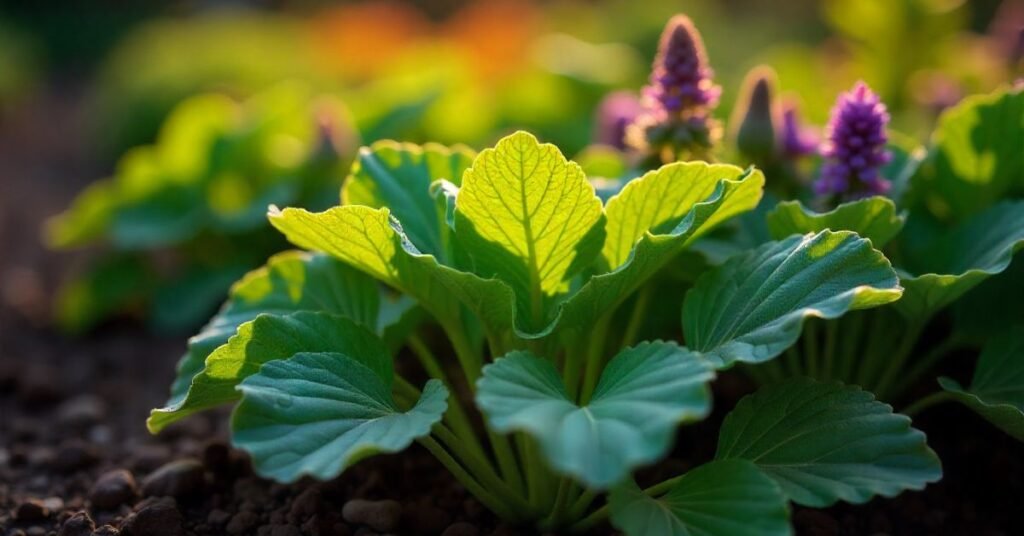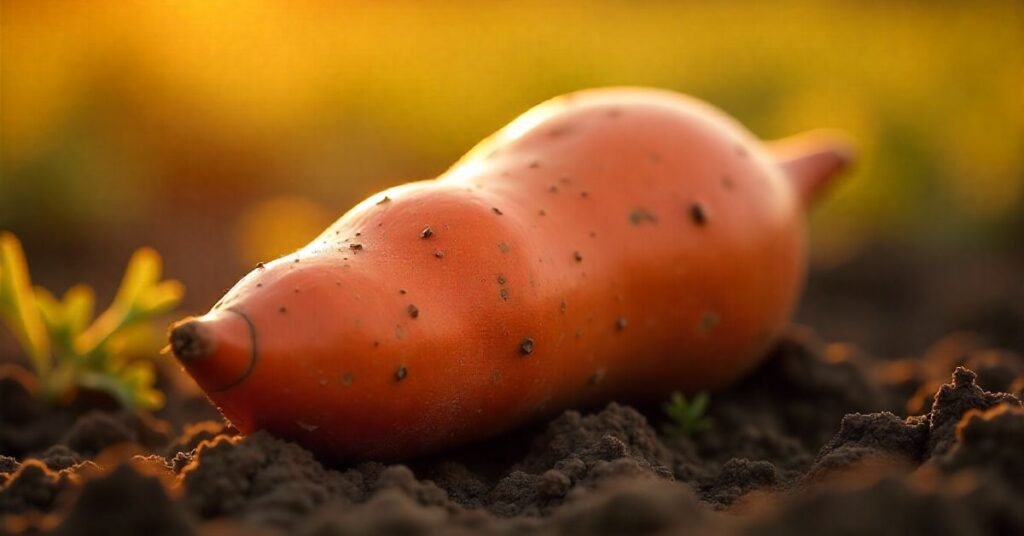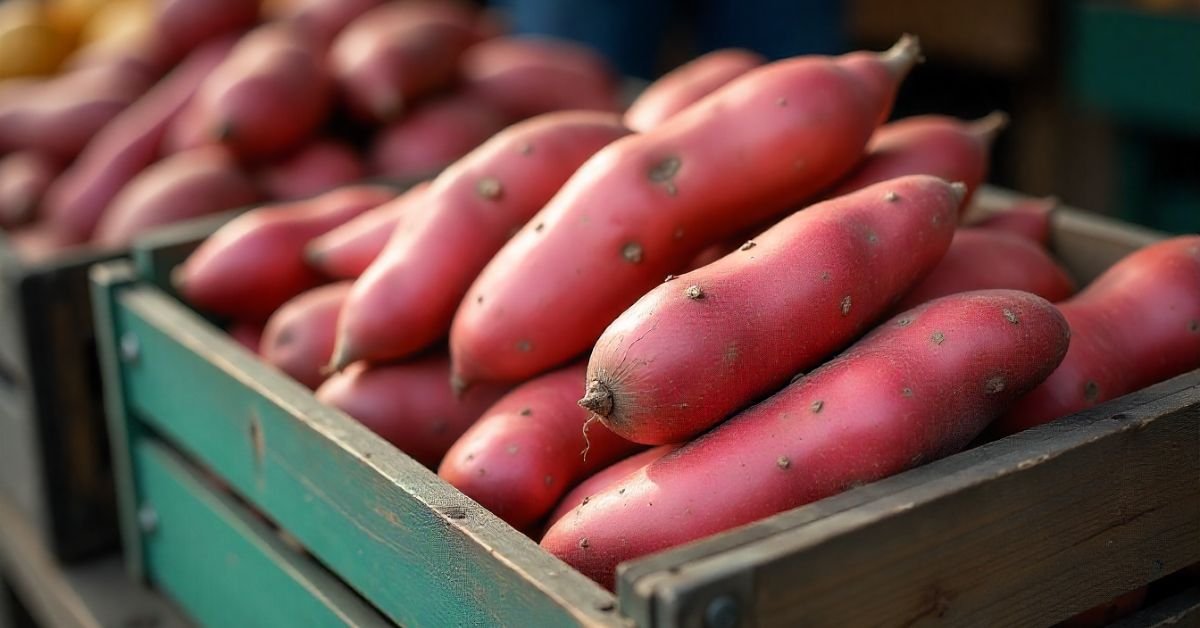Introduction
Beauregard sweet potato plants are a popular variety of sweet potatoes. They are known for their high yield and tasty orange flesh. These plants grow well in warm climates and produce smooth skinned tubers. They are often used in home gardens and commercial farming. This variety matures quickly and is easy to care for.
If you want sweet potatoes that grow fast and taste delicious, Beauregard is a great choice. Gardeners love them because they adapt to different soils. They also store well after harvesting. With the right care, you can enjoy a big harvest. This makes them perfect for both beginners and experienced growers.
These plants need full sun, loose soil, and regular watering. Plant them in rows for better growth. Harvest usually happens in about 90 days. They are ideal for cooking, baking, and making fries. Growing Beauregard sweet potatoes can be rewarding and simple.
Ideal Climate and Light for Beauregard Sweet Potato Plants
Beauregard sweet potato plants thrive best in warm conditions. Day and soil temperatures should be warm and fairly stable. Soil temperature of at least 18-20°C (65-68°F) is good before planting. They are frost sensitive. Even a light frost can damage vines or roots. Full sun is essential.

Beauregards need at least 6 hours of direct sunlight daily. More sun makes sweeter, larger tubers and healthy foliage. In cooler climates, starting plants indoors or using plastic mulch or row covers helps warm soil and extend growing time. Humidity moderate to high helps, but good airflow prevents disease.
Propagation: How to Start Beauregard Sweet Potato Plants
- Start Beauregard sweet potato plants from slips, not seeds.
- Use a healthy tuber and place part of it in water or soil to make sprouts.
- When sprouts reach about 15 cm (6 in) with small roots, twist them off and root them separately.
- The plant slips only after frost danger has passed and the soil is warm.
- In cooler areas, start slips indoors 4–8 weeks before planting and give them good light to stay strong.
Soil Requirements & Preparation
Beauregard sweet potato plants thrive in loose, well drained sandy or loamy soil with a slightly acidic pH of 5.5 to 6.5. Improve heavy clay by adding compost or well rotted manure and loosen the ground 8 to 10 inches deep so roots spread easily. In cold or compact soil, create raised beds or mounds for better warmth and drainage, and apply mulch later to hold moisture and control weeds.
Planting: Spacing, Depth & Timing
Timing is very important when planting Beauregard sweet potato plants. Wait until the soil is warm at about 65–70°F (18–21°C). Planting too early can slow root growth and increase the chance of damage. Warm soil helps the slips root quickly and grow strong.
Plant the slips about 2–3 inches (5–8 cm) deep. Bury the roots and part of the stem but keep the leaves above the ground. Leave 12–18 inches (30–45 cm) between plants and 2.5–3 feet (75–90 cm) between rows so the vines have room to spread. In containers, use deep pots at least 30 cm (12 in) with drainage holes and fill with rich potting mix and compost.
Care: Watering, Fertilizer, and Mulching
- Keep soil evenly moist while plants are young for strong root growth.
- Water deeply but less often once plants are established.
- Avoid overwatering to prevent root rot.
- Use a balanced fertilizer with enough phosphorus and potassium.
- Limit nitrogen to prevent too much leaf growth instead of tubers.
- Add organic matter to improve soil fertility.
- Mulch around plants to hold moisture, reduce weeds, and stabilize soil temperature.
- Pruning is not usually needed but trim very long vines to keep space tidy.
- Keep plenty of healthy leaves because they make energy for tuber growth.
Pests and Diseases
| Problem | Short Description | Simple Solution |
| Sweet potato weevil | Small insects that damage stems and tubers. | Remove infested plants and rotate crops. |
| Aphids | Tiny pests that suck sap from leaves. | Spray with water or use insecticidal soap. |
| Whiteflies | Small white insects on the undersides of leaves. | Use sticky traps or natural predators. |
| Root rot | Fungal disease caused by overwatering or poor drainage. | Improve drainage and water less often. |
| Leaf spot | Brown or yellow spots on leaves from fungal infection. | Remove affected leaves and keep the area clean. |
Harvesting and Storage
Harvest Beauregard sweet potato plants when the leaves turn yellow and begin to die back. This is usually 90 to 110 days after planting. Loosen the soil gently with a garden fork to lift the tubers without breaking them.

Cure the harvested sweet potatoes in warm, humid conditions for about 7 to 14 days so their skin hardens and flavor improves. After curing, store them in a cool, dark, and well ventilated place at 55 to 60°F (12 to 15°C). Keep them away from frost or very cold temperatures to make them last for months.
Timeline & Tasks for Beauregard Sweet Potato Plants
| Time after Planting | What to Do |
| 0 weeks | The plant slips when soil is warm; water thoroughly after planting. |
| 1-3 weeks | Keep soil moist; slip root and establish. Mulch to retain moisture. |
| 4-8 weeks | Vines grow; watch for pests, ensure good watering and moderate fertilizer. |
| 8-12 weeks | Tubers forming; reduce overwatering; shape soil mounds if needed. |
| ~90-110 days | Leaves yellow; harvest tubers carefully. |
| After harvest | Cure tubers in warm/humid places; then move to cool dark storage. |
Yield & Uses
Beauregard sweet potato plants give good yields. In favorable conditions, each plant can produce 2-3 lbs (around 0.9-1.4 kg) of tubers. The flavour is sweet, moist, and excellent for baking, roasting, frying, mashing, or making sweet dishes like pies. Leaves are also edible and nutritious. Nutritional value includes beta carotene, fiber, vitamin B6, minerals like copper and manganese
Growing Beauregard Sweet Potato Plants in Containers & Cooler Regions
- Choose large, deep containers with drainage holes.
- Use loose, sandy or loamy soil with organic matter.
- Keep soil slightly acidic between pH 5.5 and 6.5.
- Plant healthy slips or cuttings, not seeds.
- Place containers in full sun for at least 6 hours daily.
- Water regularly but avoid waterlogging.
- Fertilize lightly with balanced organic fertilizer.
- Use dark-colored pots to keep soil warmer in cool regions.
- Protect plants from frost with row covers or by moving containers indoors.
- Harvest when leaves yellow and vines start to die back.
Summary
Beauregard sweet potato plants offer a reliable, sweet, orange fleshed crop. With warm soil, full sun, well drained soil, and regular care, they give generous yields. Watch out for pests and disease, harvest at the right time, cure properly, and store well. Even gardeners in cooler zones can succeed if they plan carefully. Grow Beauregards with patience and care, and you will enjoy delicious sweet potatoes from your own garden!
FAQs
Q1: When should I plant Beauregard sweet potato slips?
Plant them after the last frost when the soil is warm, usually in late spring.
Q2: What type of soil is best for Beauregard sweet potato plants?
Loose, well-drained sandy or loamy soil with a slightly acidic pH between 5.5 and 6.5 works best.
Q3: How long do Beauregard sweet potatoes take to mature?
They are usually ready to harvest in about 90–110 days after planting.
Q4: Can Beauregard sweet potato plants grow in containers?
Yes, they grow well in large deep containers with rich soil and full sun.
Q5: How can I store harvested Beauregard sweet potatoes?
Cure them in a warm, humid place for about a week, then store in a cool, dark, well-ventilated area.


